Cloud-Native Comes of Age in Insurance

“The world is moving so fast these days that the man who says it can’t be done is generally interrupted by someone doing it,” said Elbert Hubbard. In a similar vein, new technologies like cloud-native have been in existence for a while now, while older on-premises systems and cloud-based solutions continue to be utilized, displaying significant advantages over the latter.
Cloud-native has matured and earned a strong reputation in the insurance industry, providing numerous benefits such as flexibility, scalability, agility, cost-efficiency, resiliency, and uninterrupted services. These native applications are easy to install, iterate, and develop due to their independent and loosely coupled services.
The design of cloud-native is specifically tailored to leverage the advantages offered by the cloud. Applications built using Platform-as-a-Service (PaaS) tools enhance cloud performance. Additionally, cloud-native offers services that traditional data centers typically need to purchase separately, such as natural language processing (NLP), artificial intelligence (AI), and optical character recognition (OCR).
The relationship between insurers and cloud-native has demonstrated that many companies have shifted towards a cloud-native approach to secure data, achieve long-term sustainability, and overcome the challenges posed by cloud responsibility models. Cloud-native accomplishes the optimization of cliché cloud processes, deploying microservices using DevOps technology and culture, enabling faster and incremental service releases that can be installed, replaced, or tested without affecting others.
Cloud-Native: A Breakthrough in Insurance
Cost Reduction: Cloud-native computing significantly drives down costs by optimizing scalability, fault management, disaster recovery, operation management, and eliminating vendor lock-in. It operates on an open-source and serverless model, enabling insurers to pay only for the resources they use.
Customer-Centric Approach: Cloud-native applications prioritize functionality over the underlying platform, allowing insurers to focus their energy on serving customers without distractions.
Automation and Compatibility: Embracing Agile techniques and the DevOps system ensures continuous acceleration in integration, testing, delivery, deployment, and operations. This creates an environment that consistently improves customer experiences and allows insurers to work seamlessly across multiple cloud platforms, be it hybrid cloud, public, or private.
Scalability and Adaptability: Cloud-native applications offer horizontal scalability and adapt to changes based on customer feedback through frequent software updates and service improvements, rendering traditional strategies obsolete.
Agility and Flexibility: The agility and flexibility of cloud-native systems foster continuous innovation, enabling insurers to differentiate their client experiences effectively.
Microservices Architecture: By leveraging a microservices architecture, cloud-native systems streamline key business activities such as underwriting, policy administration, claims management, rating, and document management.
Avoiding Vendor Lock-in: Cloud-native applications allow insurers to switch to preferred cloud platforms for better pricing and plans, resulting in increased customer satisfaction and retention.
Serverless and Reusability: The cloud-native infrastructure allows for remote testing of new codes without disrupting ongoing activities. Additionally, it enables the reuse of portions of code and elements from other projects, maximizing efficiency.
Simplified Troubleshooting: Cloud-native infrastructure incorporates a fault-tolerant mechanism, making post-deployment issue identification and resolution easier. Isolated microservices allow for problem-solving at the source level without server downtime.
Real-time Analytics: With cloud-native architecture, insurers can efficiently handle uncertainties through real-time data analysis, enabling them to detect issues, track customer behavior, and make informed decisions.
Enhanced Security: Cloud-native systems alleviate concerns about updating underlying infrastructure security. Instead, insurers can focus on securing their data as part of the shared responsibility model.
Conclusion:
While insurers may face challenges such as customer data maintenance, reliance on legacy systems, security breaches, and budget constraints, embracing cloud-native solutions is essential to stay competitive. To thrive in today’s insurtech-driven landscape, standard insurance companies must allocate budgets for modernization, hybrid integration, and microservices-based application programming interfaces.
Driven by data, customer satisfaction, and cost optimization, the insurance industry recognizes cloud-native as a cutting-edge solution for sustaining growth and generating substantial revenue. Statistics show that 64% of insurers can develop and deploy new web applications within 14 days with cloud-native, while 84% witness increased profit and reduced operating costs.
Cloud-native tools offer leading insurers the potential to boost innovation and accelerate speed-to-market for new products and solutions. Embracing cloud-native computing will enable insurers to seize new opportunities and meet the demands of the dynamic insurance landscape.






